NEGATIVE THERMAL EXPANSION 
Low Energy Phonon Modes & Negative Thermal Expansion
(Animate Lattice)
Recently UCSC physics students Jason Hancock and Chandra Turpen, and their advisor Zack Schlesinger, have been studying an unusual material that contracts rather
than expanding as it is heated, defying common sense. They think they have observed something out of the ordinary
in the nature of the low-frequency lattice vibrations.
Scientists have been studying this material for the last 8 years, trying to figure out why this anomalous thermal contraction occurs, and how it
can survive over such a wide range of temperature (from nearly absolute zero to 1500 F in Zr(WO4)2. Evidence points to strange low-frequency phonons.
Phonons are the quantum physics energy states associated with vibrations of the atoms of a crystal lattice structure.
Jason and Chandra have been studying these phonons using infrared
spectroscopy. With infrared light they can “see” the phonons and they think they have discovered something unusual that
is intimately related to the occurence and persistence of negative thermal expansion in Zr(WO4)2.
A paper describing their work, written with collaborators
Arthur Ramirez (Bell Labs) and Glen Kowach (CCNY), was published in Physical Review Letters on November 26, 2004.
Here is an animation showing a pictorial representation of a phonon. On your computer you will see an osillation frequency of about
one cycle-per-second. The actual phonon oscillates about one thousand-trillion (1012) times faster (and that is a low-frequency mode!).
In the Zr(WO4)2 crystal, WO4 tetrahedra are linked to each other via zirconium atoms. In the picture shown here the reddish-brown pyramids represent WO4 tetrahedra
with the tungsten atom in the middle and oxygens at the corners. The greenish octagons have a zirconium in the center (and oxygens at each corner).
Many crystals have intriguing high-frequency “ breathing modes” and “ bond-bending modes” , however, it is the low-frequency phonons
that UCSC scientists think are particularly unusual.
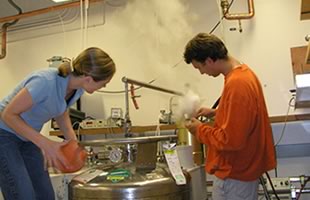
Chandra Turpen and Jason Hancock use liquid helium to
cool a detector to 2 degrees above absolute zero
temperature. Getting the detector this cold reduces
the noise in their experiment and enables them to
detect subtle spectroscopic signatures of
far-infrared phonons. |
|
The low frequency modes involve mainly twist and tilting, but there is a subtle to-and-fro motion that accompanies that twist.
It is an odd characteristic of this particular lattice structure that when tetrahedra do the twist, they also pull their partners to and fro. Equally odd is that this dance seems
to cause the dance hall to contract (with increasing temperature).
But if the structure, which is unusually open and unconstrained, were to abruptly collapse to a much denser structure, then the party is over. In this material the party goes on
from about 10 K to 1000 K (1500 F) which is is a suprisingly big range! The absence of an instability, is difficult to understand in conventional terms and suggests the relevance of a phenomena
known as "geometrical frustration'' that is important in magnetic systems.
|
Intro to negative thermal expansion in Zr(WO4)2
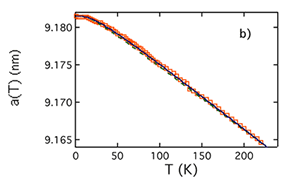 |
|
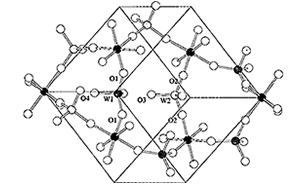 |
| Analysis of the curvature of a(T) leads to the inference that the dynamics in a low-energy range (see below) are of particularly importance to NTE in ZWO. |
|
Complex structure with large open spaces.
Jorgensen et al., PRB (1999)
|
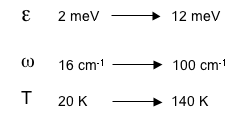 |
|
David, Sleight and co-workers
Pryde, Dove and co-workers
Ramirez, Kowach and co-workers
|
Using simpler models to understand NTE origins
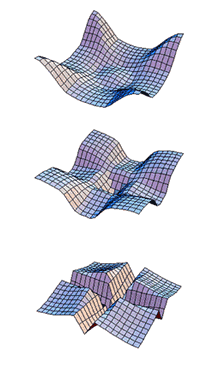 |
|
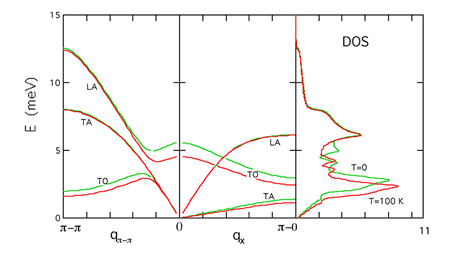 |
| |
NTE from underconstraint
Downward shifting density of states(DOS) peak associated with an extensive manifold of softening modes can drive a large, sustained negative thermal expansion. The entropy of a thermodynamic number of softening modes, which arise due to underconstraint, appears to be a critical factor. |
top of page
|





